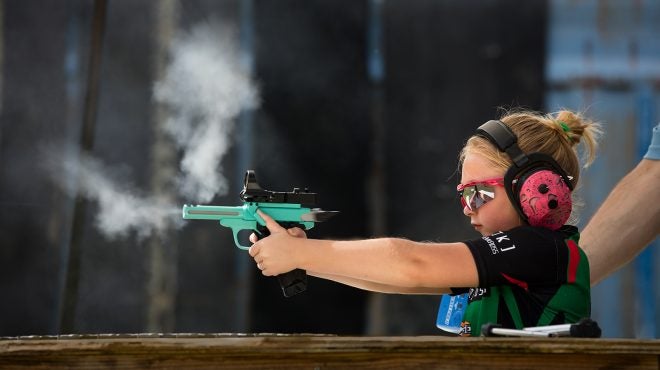How to select the barrel for a rimfire competition pistol
Oleg Volk 10.24.18
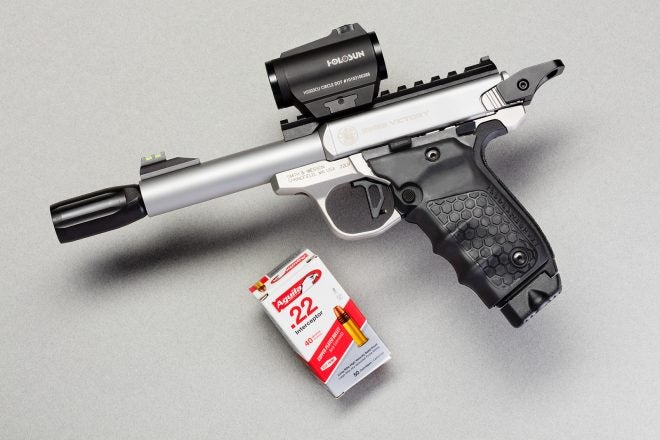
Among the reasons for the popularity of the recent S&W Victory pistol is the ease with which its barrels can be switched out. The classic Dan Wesson’s popularity was largely due to the many barrel length options, from 2 to 8 inches. The options for Victory are all more similar to each other, in the 5.5 to 6.75 inch range, but made in a greater variety of materials and weights.
Advantages of long and heavy barrels for sports shooting are obvious: improved sight radius, greater heat endurance for accuracy even after long strings of fire, less muzzle flip on firing, usually better reliability in semiauto pistols. The disadvantages are more subtle, but no less real: less steady balance and greater weight leading to shooter fatigue. The weight distribution becomes even more of a consideration if a sound-suppressor is added.
Certain qualities appear to be mutually exclusive: for example, it’s easier to hold a short pistol steady, but easier to aim and control recoil of a longer one. In sports where shooting is deliberate and done with support, like Rimfire Silhouette, a heavyweight barrel with a long sight radius holds no disadvantages.
For sports in which rapid fire is required, such as Rimfire Steel Challenge, the standard barrel may be used — but it is suboptimal because of the substantial inertia of the steel barrel. Unless the competitor is shooting without stopping the pistol for aiming — which is possible but requires a great skill — starting and stopping the swing of a front-heavy pistol takes time. Volquartsen carbon fiber wrapped steel barrel solves the inertia problem and also makes it easier to steady the pistol by moving the center of balance over the supporting hand.
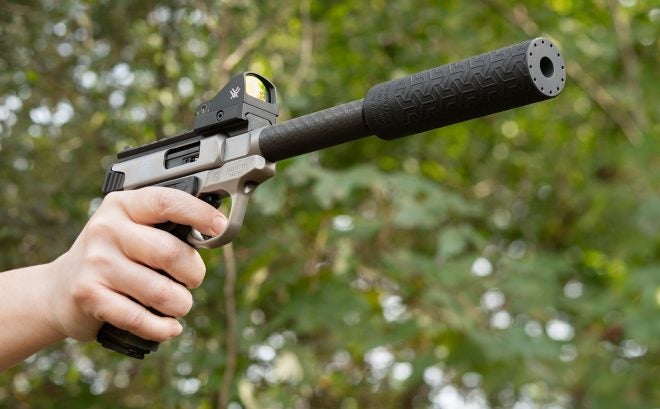
Another solution from Tactical Solutions Ridgelite barrel uses a steel insert inside of an aluminum sleeve, rigid and providing relatively quick cooling. Muzzle flip gets more pronounced, of course, so regaining the sight picture takes longer.
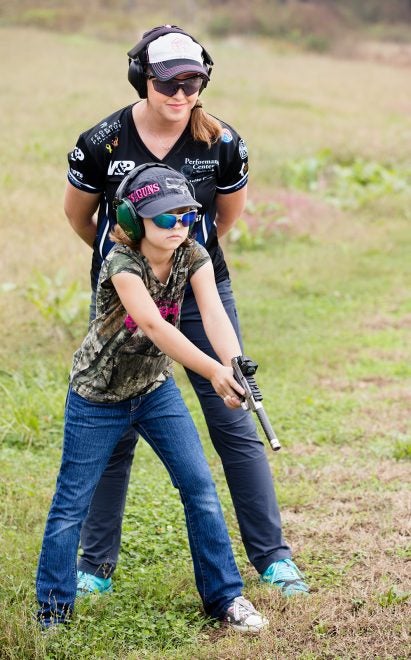
That, in turn, can be fixed with a muzzle compensator, particularly the very effective Tandemkross Game Changer Pro. Unlike a lot of muzzle brakes, this compensator doesn’t divert so much gas back to the shooter as to make the report much louder.
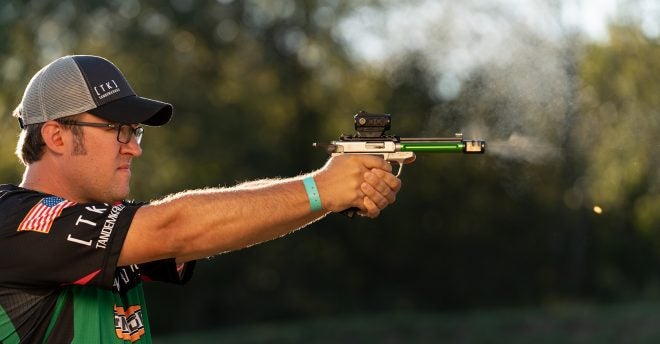
The advantage of the light barrel and compensator is in the overall lighter weight and rear-biased balance compared to the standard barrel. An intermediate option is a fluted steel barrel designed to reduce weight while increasing the heat-radiation surface area.
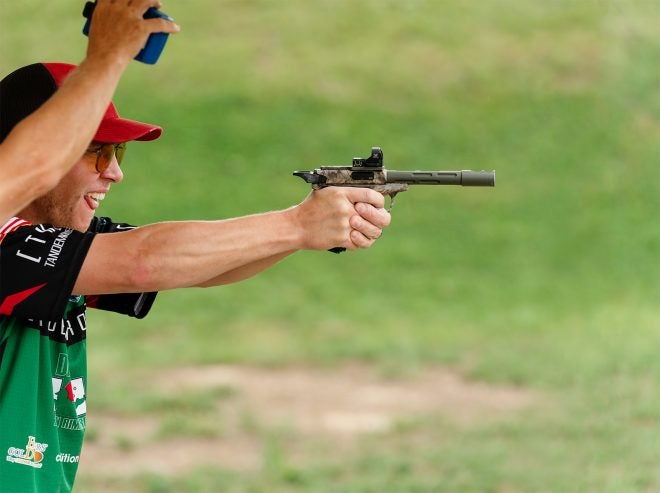
With Victory being optic-compatible from the start, shorter barrels are possible in theory, but would probably require some back-pressure producing muzzle device to ensure reliably cycling with standard velocity ammunition. One man compensated the factory barrel, making it in effect shorter and easier to handle for his young daughter.
Designed around the fairly long 5.5″ barrel, Victory is quite accurate with iron sights but really comes into its own with optics. Compared to Smith’s own M41 target pistol mounting only iron sights even with a 7 inch barrel, Victory with a red dot is more accurate thanks to better sight picture and comparably accurate barrel. M41 wins on trigger pull, but Tandemkross replacement trigger improves even on that. It’s no surprise that ergonomically upgraded Victory model is starting to show up in increasing numbers at rimfire competitions.

